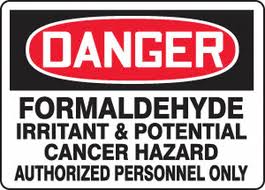From what I have seen, there are not a large amount of formaldehyde exposures in construction. However, there is A LOT of formaldehyde used in construction materials. Formaldehyde can be dangerous at levels undetectable by your nose. And, the symptoms of exposure are nondescript (irritant & tingling of eyes, nose, respiratory tract).
Here are some products that may contain trace (or more) amounts of formaldehyde:
- resins in plywood, MDF, CDX, particle board/fiber board
- garage doors
- drywall
- roofing
- glues / mastics
- paint/coatings
- carpets
- insulation (spray in and batting)
I believe the reason we do not see high exposures is due to the limited duration of exposure, and the open-aired nature during the construction. Some exceptions are warehouses with large storage areas of particle board/MDF. (I have found exposures in these areas)
The OSHA exposure limit for formaldehyde is 0.75 ppm (action limit of 0.5 ppm, and short term limit of 2 ppm). However, this may not be low enough, based upon other standards (ACGIH says 0.3 ppm, NIOSH 0.1 ppm)
Another major issue with this hazard in construction is once the space is occupied.
- Once construction is done, the space may be sealed up, heated, and additional curing can occur.
- This may release more formaldehyde, and also NOT allow as much to escape (by dilution ventilation).
- Compounding this issue are the type of occupants in the building. Are there children, non-working adults, immunocompromised individuals, sick, or elderly occupying this space? The OSHA standards are NOT protective for these types of people.
I do not forsee this type of sign being posted immediately after new construction.
 On the plus side, someone has discovered that plants may help reduce formaldehyde & VOC levels in homes. Horticulture Science Kwang Jim Kim, et.al
On the plus side, someone has discovered that plants may help reduce formaldehyde & VOC levels in homes. Horticulture Science Kwang Jim Kim, et.al